South Africa is not only home to some of world’s best scenic views, coastlines and wildlife but it also boasts eight world heritage sites as determined by the United Nations Educational, Scientific and Cultural Organisation's World Heritage Committee.
A heritage site is a place of cultural or natural significance that is recognised as being of outstanding international importance and deserving of special protection. South Africa’s eight heritage sites consist of four cultural, three natural and one mixed site. Here is more information on South Africa’s heritage sites:
iSimangaliso Wetland Park
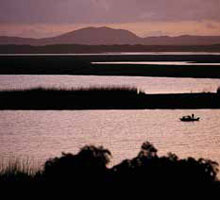 iSimangaliso Wetland Park is South Africa’s first world heritage site and is situated in KwaZulu-Natal’s central coast of Zululand. Previously known as Greater St Lucia Wetland Park, iSimangaliso Wetland Park is home to a range of species of plant and animal life. With its exceptional beauty, the park contains lake systems, interlinking ecosystems, most of South Africa’s remaining swamp forests, Africa’s largest estuarine system and coastal dunes.
iSimangaliso Wetland Park is South Africa’s first world heritage site and is situated in KwaZulu-Natal’s central coast of Zululand. Previously known as Greater St Lucia Wetland Park, iSimangaliso Wetland Park is home to a range of species of plant and animal life. With its exceptional beauty, the park contains lake systems, interlinking ecosystems, most of South Africa’s remaining swamp forests, Africa’s largest estuarine system and coastal dunes.
Robben Island
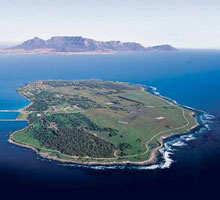 Robben Island has become a symbol of “the triumph of democracy and freedom over oppression”. The island is situated offshore from Cape Town and is also home to the Robben Island Museum. In 1999 the World Heritage Committee declared Robben Island a World Heritage site of cultural significance.
Robben Island has become a symbol of “the triumph of democracy and freedom over oppression”. The island is situated offshore from Cape Town and is also home to the Robben Island Museum. In 1999 the World Heritage Committee declared Robben Island a World Heritage site of cultural significance.
Cradle of Humankind
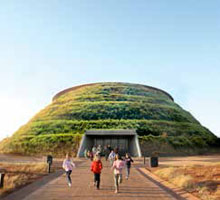 The Cradle of HumanKind is in Sterkfontein, Swartkrans, Kromdraai and surrounding areas. These regions have some of the world’s richest early human fossils or remains thereof. These fossils are as old as 3,5 million years old and together with the remains of ancient plants and animals, stretch over a distance of 47 000 hectares. The area provides important information on early humans who appeared 5 million years ago. Excavations in the area produced a number of complete skeletons and major finds.
The Cradle of HumanKind is in Sterkfontein, Swartkrans, Kromdraai and surrounding areas. These regions have some of the world’s richest early human fossils or remains thereof. These fossils are as old as 3,5 million years old and together with the remains of ancient plants and animals, stretch over a distance of 47 000 hectares. The area provides important information on early humans who appeared 5 million years ago. Excavations in the area produced a number of complete skeletons and major finds.
Maloti Drakensberg Park
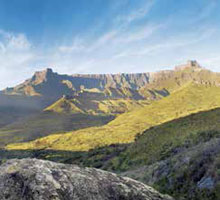 The Maloti Drakensberg Park is a mixture of both cultural and natural significance. Culturally because of its rock paintings, and naturally because of its location in the Drakensberg mountains. The park is situated west of KZN on the Lesotho border. For more than 4 000 years, the mountains have been home to South Africa’s indigenous people, the Khoisan. This would explain the rock paintings, the largest collection in Africa. These rock paintings are educational and shed light on how the San people viewed the world they lived in.
The Maloti Drakensberg Park is a mixture of both cultural and natural significance. Culturally because of its rock paintings, and naturally because of its location in the Drakensberg mountains. The park is situated west of KZN on the Lesotho border. For more than 4 000 years, the mountains have been home to South Africa’s indigenous people, the Khoisan. This would explain the rock paintings, the largest collection in Africa. These rock paintings are educational and shed light on how the San people viewed the world they lived in.
Mapungubwe Cultural Landscape
 Mapungubwe means “place of the stone of wisdom”. It was known as South Africa’s First Kingdom where people of affluent status traded with Egypt, India and China. Mapungubwe is situated in the grasslands of the Mapungubwe National Park, which is at the joining of the Limpopo and Shashe Rivers in Limpopo. It borders South Africa, Zimbabwe and Botswana, which would explain the reasons for it being a trading centre.
Mapungubwe means “place of the stone of wisdom”. It was known as South Africa’s First Kingdom where people of affluent status traded with Egypt, India and China. Mapungubwe is situated in the grasslands of the Mapungubwe National Park, which is at the joining of the Limpopo and Shashe Rivers in Limpopo. It borders South Africa, Zimbabwe and Botswana, which would explain the reasons for it being a trading centre.
Cape Floral Region
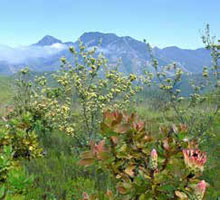 The Cape Floral Region contains 3 per cent of the world’s plant species. It consists of eight protected areas, surrounded by land and sea, stretching from the Cape Peninsula to the Eastern Cape. Kirstenbosch Botanical Garden, which is part of the region, became the first Botanical Gardens to be part of a world heritage site. The Cape Floral Region has a large number of diverse plant and animal species, ranking South Africa as third highest in biodiversity. This region is also home to many indigenous plants not known to any other place on earth. Although small in landmass, the region is home to 20 per cent of Africa’s plant life.
The Cape Floral Region contains 3 per cent of the world’s plant species. It consists of eight protected areas, surrounded by land and sea, stretching from the Cape Peninsula to the Eastern Cape. Kirstenbosch Botanical Garden, which is part of the region, became the first Botanical Gardens to be part of a world heritage site. The Cape Floral Region has a large number of diverse plant and animal species, ranking South Africa as third highest in biodiversity. This region is also home to many indigenous plants not known to any other place on earth. Although small in landmass, the region is home to 20 per cent of Africa’s plant life.
Richtersveld Cultural Landscape
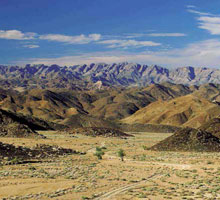 This landscape covers 160 000 hectares of rocky desert. A unique feature about this site is that it is owned and managed by a community, known as the Nama people. Although the temperatures in this area are very high, it provides a semi-nomadic pastoral livelihood for the Nama people. The Nama people are descendants of the Khoisan people. Due to the land restitution programme, the Nama people were given back their land a few years ago. Today the Nama people live in the land and conserve its natural surroundings. The Nama people are still nomadic to this day.
This landscape covers 160 000 hectares of rocky desert. A unique feature about this site is that it is owned and managed by a community, known as the Nama people. Although the temperatures in this area are very high, it provides a semi-nomadic pastoral livelihood for the Nama people. The Nama people are descendants of the Khoisan people. Due to the land restitution programme, the Nama people were given back their land a few years ago. Today the Nama people live in the land and conserve its natural surroundings. The Nama people are still nomadic to this day.
Vredefort Dome
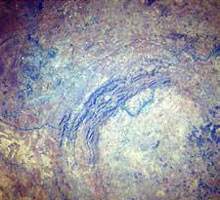 Near the town of Vredefort in the Free State, some 2 billion years ago, a meteorite hit the earth and created an enormous impact crater, today known as the Vredefort Dome. Although in the top three for crater structures, the Vredefot dome is the oldest and largest meteorite visible on the planet. The original crater must have been about 250- 300 kilometres in diameter, but has eroded away over the years. The original impact of the meteorite was 380 kilometres across, which consists of three circles of uplifted rock. The inner circle was named a world heritage site and is visible over the range of hills near Parys and Vredefort.
Near the town of Vredefort in the Free State, some 2 billion years ago, a meteorite hit the earth and created an enormous impact crater, today known as the Vredefort Dome. Although in the top three for crater structures, the Vredefot dome is the oldest and largest meteorite visible on the planet. The original crater must have been about 250- 300 kilometres in diameter, but has eroded away over the years. The original impact of the meteorite was 380 kilometres across, which consists of three circles of uplifted rock. The inner circle was named a world heritage site and is visible over the range of hills near Parys and Vredefort.



 Facebook
Facebook Twitter
Twitter WhatsApp
WhatsApp